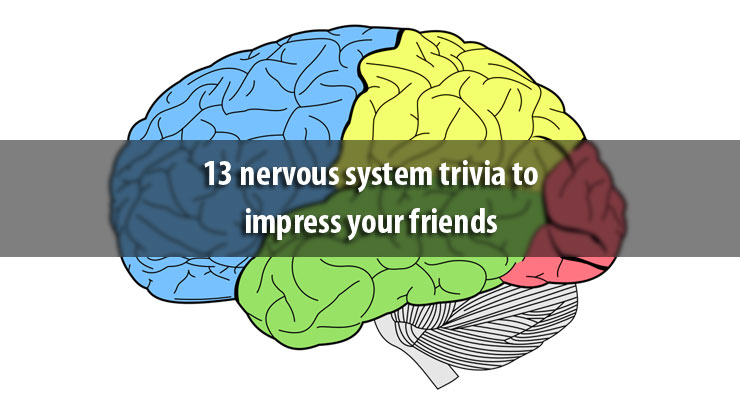From time to time, we shares several facts of nervous system trivia on our social media channels. We thought we’d compile a few of the facts here, facts that most people don’t know.
(Check us out on Facebook, Twitter, LinkedIn, Google+, YouTube, and Pinterest.)
Without further ado, here are 13 nervous system trivia to impress your friends:
- Despite being slower than electrical synapses, chemical synapses greatly increase behavioural flexibility.
- Electrical impulses produced in neurons can be initiated by neurotransmitters (such as serotonin).
- Electricity produced in the axons of our neurons is the increase and decrease of sodium and potassium levels in a cell.
- Neurons in your body use electricity to send messages.
- Microglia cells float around the brain, monitoring it for damage and helping to repair it and remove any foreign matter.
- Astrocyte cells protect the blood-brain barrier by keeping its junctions tight, preventing the introduction of foreign bodies.
- Cerebrospinal fluid is produced by ependymal cells that line the brain’s ventricles.
- Cerebrospinal fluid does more than protect your brain. It also helps remove waste and helps keeps the brain cool.
- There are 3 types of neurons: sensory, motor, and interneurons (talk between the other two).
- Each neuron has tens of thousands of dendritic spines, which allows it to receive information from thousands of other neurons.
- Most neurons in our body are with us for life and cannot be replaced if they are lost through brain or spinal cord damage.
- Neurons change their shape many times throughout their life, growing and eliminating dendrites as needed.
- The longest neurons in your body are part of the sciatic nerve, running from your spine to your big toe.
What is your favourite piece of nervous system trivia that we missed? Let us know in the comments below.
All facts and trivia above are taken from An Introduction to Brain and Behaviour (3rd edition) by neuroscientists Dr. Bryan Kolb and Dr. Ian Q. Winshaw.

